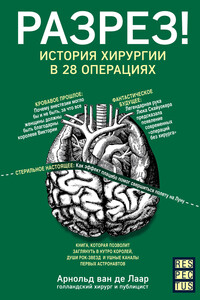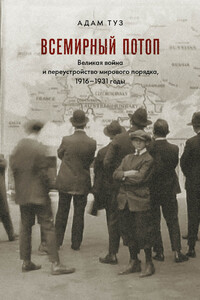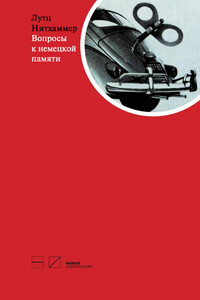Мозг: биография. Извилистый путь к пониманию того, как работает наш разум, где хранится память и формируются мысли - страница 206
15. McCulloch, W. and Pitts, W. (1943), Bulletin of Mathematical Biophysics 5:115–33.
16. Arbib (2000), p. 207; Kay, L. (2001), Science in Context 14:591–614, p. 592.
17. McCulloch, W. (1965), Embodiments of Mind (Cambridge, MA: MIT Press).
18. Там же, p. 9.
19. Arbib (2000), p. 199.
20. Цитаты из работ: McCulloch and Pitts (1943), pp. 122, 123, 120.
21. Masani, P. (1990), Norbert Wiener 1894–1964 (Basel: Birkhauser Verlag); Kay (2001); Abraham (2004); Piccinini, G. (2004), Synthese 141:175–215; Koch, C. (1999), Biophysics of Computation: Information Processing in Single Neurons (New York: Oxford University Press); недавний пример элемента И, воплощенного в одной клетке: Dobosiewicz, M., et al. (2019), eLife 8:e50566.
22. Heims, S. (1980), John von Neumann & Norbert Weiner: From Mathematics to the Technologies of Life and Death (London: MIT Press), pp. 192–9.
23. Цитаты из: von Neumann, J. (1993), IEEE Annals of the History of Computing 15:27–43, pp. 33, 37, 38.
24. Conway and Siegelman (2005).
25. Abraham (2016), p. 89.
26. Rosenblueth, A., et al. (1943), Philosophy of Science 10:18–24, p. 20.
27. Craik, K. (1943), The Nature of Explanation (Cambridge: Cambridge University Press), p. 52; Zangwill, O. (1980), British Journal of Psychology 71:1–16.
28. Craik (1943), p. 53.
29. Там же, p. 61.
30. Collins, A. (2012), Interdisciplinary Science Reviews 37:254–68.
31. Craik (1943), p. 115.
32. Adrian, E. (1947), The Physical Background of Perception (Oxford: Clarendon Press), pp. 93–4.
33. Turing, A. (1937), Proceedings of the London Mathematical Society 42:230–65.
34. McCulloch and Pitts (1943), p. 129.
35. Von Neumann, J. (1951), in L. Jeffress (ed.), Cerebral Mechanisms in Behavior: The Hixon Symposium (London: Hafner), pp. 1–41, p. 32.
36. Soni, J. and Goodman, R. (2017), A Mind at Play: How Claude Shannon Invented the Information Age (London: Simon and Schuster), p. 107.
37. Hodges, A. (2012), Alan Turing: The Enigma (London: Vintage), p. 251.
38. Heims (1991), p. 20.
39. Masani (1990), pp. 243–5.
40. Организованный Фондом Хиксона, он часто называется Конференцией Хиксона или собраниеv Хиксона.
41. Цитаты из работы: von Neumann (1951), pp. 10, 20, 24, 34.
42. Цитаты из работы: McCulloch, W. (1951), in L. Jeffress (ed.), Cerebral Mechanisms in Behavior: The Hixon Symposium (New York: Wiley), pp. 45–57, p. 55.
43. Conway and Siegelman (2005), pp. 199, 169.
44. Wiener, N. (1948), Cybernetics: or, Control and Communication in the Animal and the Machine (New York: Technology Press), p. 124.
45. Pias, C. (ed.) (2016), Cybernetics: The Macy Conferences 1946–1953 (Zurich: Diaphenes), pp. 171–202.
46. Von Neumann, J. (1958), The Computer and the Brain (New Haven: Yale University Press), p. 82.
47. Olby, R. (1994), The Path to the Double Helix: The Discovery of DNA (New York: Dover), p. 354.
48. Pias (2016), p. 128.
49. Conway and Siegelman (2005), pp. 217–29.
50. Husbands, P. and Holland, O. (2008), in P. Husbands, et al. (eds.), The Mechanical Mind in History (London: MIT Press), pp. 91–148; Pickering, A. (2010), The Cybernetic Brain: Sketches of Another Future (London: University of Chicago Press).
51. Husbands and Holland (2008), pp. 116–17; Husbands, P. and Holland, O. (2012), Interdisciplinary Science Reviews 37:237–53.
52. Hodges (2012), p. 251. From Hodges’s interview with Turing’s student Robin Gandy.
53. Pias (2016), pp. 474–9.
54. Soni and Goodman (2017), p. 204. Чтобы посмотреть полный фильм, см. https://www.youtube.com/watch?v=vPKkXibQXGA.
55. Pias (2016), p. 478.
56. Soni and Goodman (2017), p. 205.
57. Pias (2016), p. 346.
58. Знаю, это не имеет смысла. Это шутка Доктора Кто.
59. Paul Mandel, ‘Deux ex Machina’, The Harvard Crimson, 5 May 1950.
60. Riskin (2016), p. 321.
61. https://www.youtube.com/watch?v=wQE82derooc.
62. Pias (2016), pp. 593–619; Dupuy, J.-P. (2009), On the Origins of Cognitive Science: The Mechanization of the Mind (London: MIT Press), pp. 148–50.
63. Книга Эшби объясняет меньше, чем обещает ее название – Ashby, R. (1952), Design for a Brain







